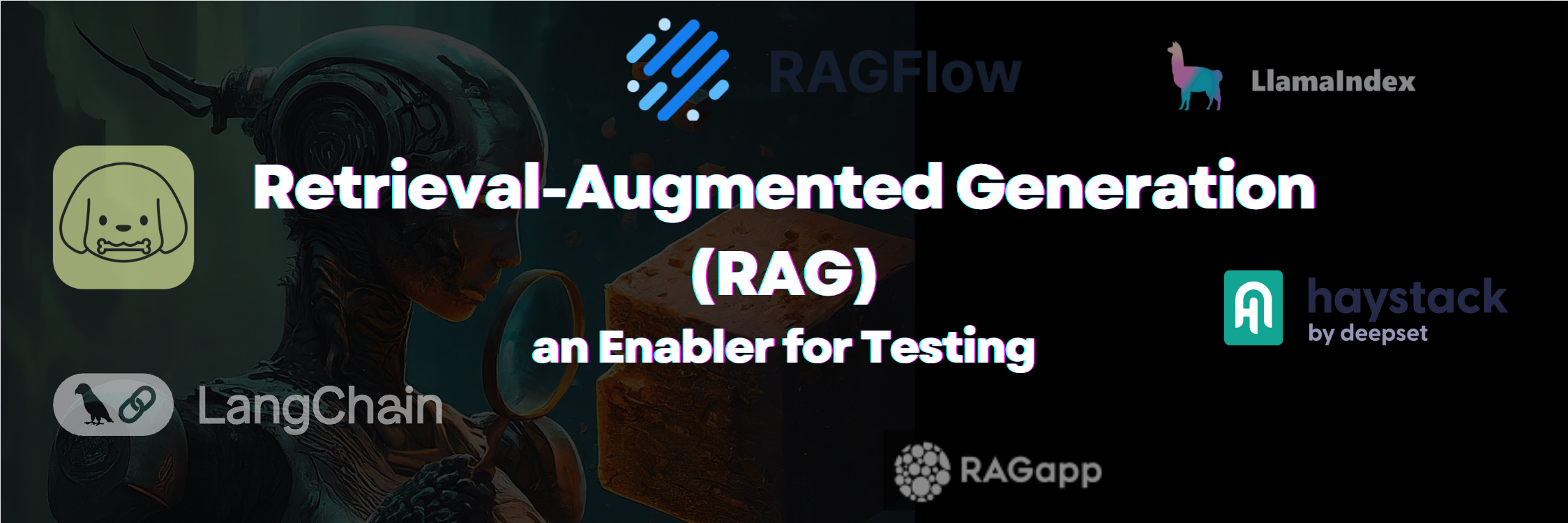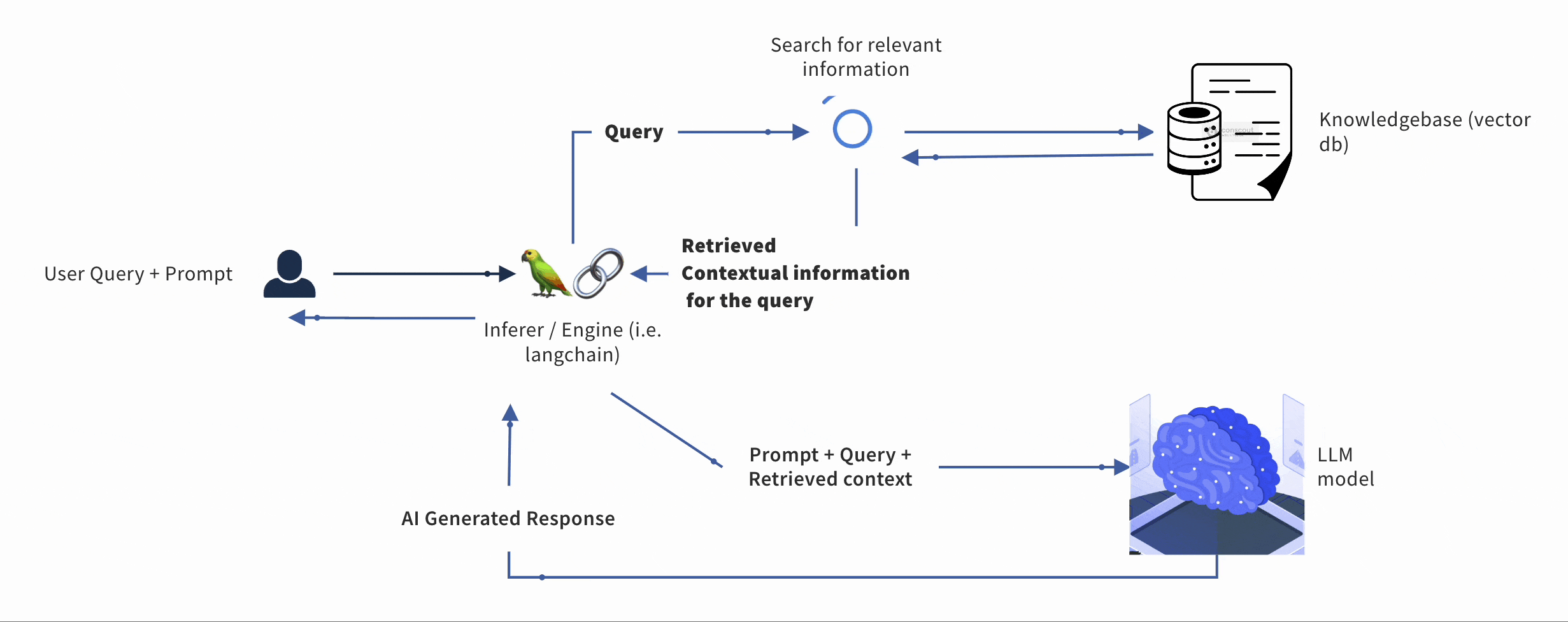
RAG App as an Enabler for Testing
What is RAG App?
A Retrieval-Augmented Generation (RAG) app is an advanced AI solution that combines two powerful technologies: retrieval-based models and generative models. Unlike traditional AI models that rely solely on pre-trained data to generate responses, RAG apps search external knowledge sources (e.g., documents, databases) to find relevant information before crafting a response. This results in more accurate and reliable outputs, especially in scenarios requiring real-time, data-driven answers—making RAG a game-changer in software testing.
Why Use RAG App Instead of Traditional GenAI Models?
While generative AI models (GenAI) are great at generating responses, they often struggle with accuracy, sometimes providing incorrect or fabricated information (hallucinations). RAG apps overcome this by retrieving information from trusted sources, ensuring the generated response is grounded in actual data.
In testing, accuracy is essential. Testers rely on precise information to develop test cases, validate requirements, and analyze test outcomes. A RAG app helps eliminate guesswork, making it a superior tool in scenarios where data integrity is crucial—such as software testing.
How Does a RAG App Work?
A RAG app operates through a simple yet effective workflow:
- User Query: A user inputs a question or request.
- Data Retrieval: The app searches external sources ( A vector database prepared from embeding of documents, databases) or knowledge bases to find relevant information.
- Generative Response: The retrieved information is passed to a generative model, which uses it to generate a contextually accurate response.
- Optional Refinement: The system may further refine the response for clarity and relevance.

This workflow ensures that the responses provided by the RAG app are not only accurate but also grounded in up-to-date data, making it a reliable assistant for complex, data-heavy processes like testing.
GitHub Repos to Set Up a RAG App Locally
Setting up a RAG system locally is now easier than ever, thanks to several comprehensive open source community projects.
Here are a few you can explore:
- Verba: The Golden RAGtriever: Feature rich opensource RAG implemetation with support for sources like UnstructuredIO, Firecrawl & many more.
- RAGFlow: A powerful RAG engine with plenty of template options to choose from.
- RAGapp: The easiest way to use Agentic RAG in your local system with docker.
Most of the RAG solution from community uses below 3 core implementation
- LangChain : A feature rich solution to build context-aware, reasoning applications .
- Haystack: A powerful framework for building search systems with RAG support.
- LlamaIndex: Focuses on easy-to-use RAG-based solutions with a simple setup process.
Use Cases for RAG in Software Testing
RAG apps offer several ways to enhance the software testing process by automating and optimizing various tasks. Here are some impactful use cases:
1. Create a Testing Oracle
A RAG app can act as a “testing oracle,” for software testing, a virtual assistant embedded with detailed knowledge of your system under test (SUT). Testers can interact with this oracle to get answers about system behavior, known issues, or expected results, all sourced from reliable documentation.
2. Leverage Knowledge from BRDs, Test Cases, Figma Designs, or Confluence Pages
The RAG app can pull information from business requirement documents (BRDs), existing test cases, Figma design files, or Confluence pages. Testers no longer need to manually search through multiple sources; the app retrieves relevant data to provide answers directly.
3. Generate Test Cases Automatically
Based on requirements or functional specifications, a RAG app can generate relevant test cases automatically. By extracting information from the retrieved documents, the app ensures all critical aspects are covered, reducing the manual workload for testers. This can also enable testers to spend more time thinking about edge cases and critical scenarios out of requirement.
4. Find Requirements in Large Knowledge Bases
Testers often deal with massive amounts of documentation. A RAG app can easily search through large knowledge repositories to find specific requirements, changelogs and their references, making it simpler to ensure complete test coverage.
5. Analyze and Improve Existing Test Cases
RAG apps can compare retrieved data (e.g., new requirements) against your current set of test cases, identifying gaps or inconsistencies. It can suggest improvements, ensuring your tests are up to date and aligned with any new changes or requirements.
6. Auto-Generate User Scenarios
Based on the retrieved requirements, the RAG app can generate different user scenarios, including edge cases or complex user flows. This results in comprehensive test coverage, ensuring more potential issues are caught before deployment.
7. Enable Continuous Testing with Real-Time Data
In continuous testing environments, RAG apps can dynamically retrieve updated information from recent code commits or updated documentation. This ensures that your tests are always aligned with the latest changes, keeping your testing process relevant and up-to-date.
Conclusion
The RAG app brings immense value to software testing, offering a blend of retrieval accuracy and generative flexibility. By leveraging both real-time data retrieval and generative AI capabilities, RAG apps provide a robust solution for testers, enabling better test case generation, requirement analysis, and streamlined testing processes. With this technology, software teams can enhance their testing efficiency, reduce manual effort, and ensure their systems are thoroughly tested with the most relevant and accurate data.
To read more such articles on artificial intelligence here.


